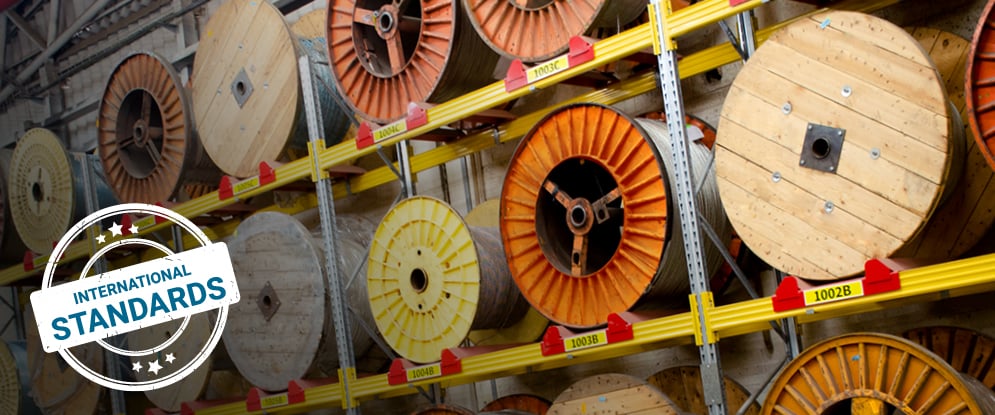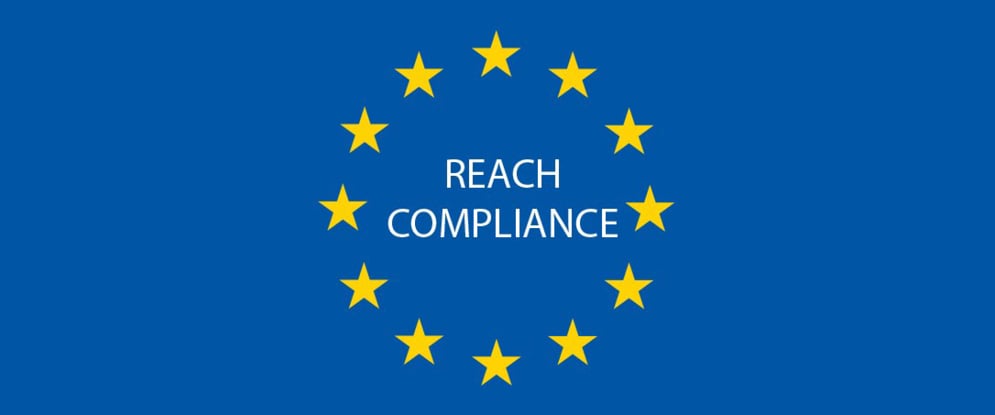Standardization is an integral part of our world and most of the time, we don’t even notice when it exists. For example, wherever you are in the world today you can send a jpg file to someone else and they’ll know what it is and be able to open it. Let’s look at another example from the shipping industry. A 40-foot container will always have the same dimensions, measurements and weight – all of which are 100% clear to any container manufacturer, shipping company or port around the world.
But what happens when there is no international standard for something we use frequently? For example, when you travel to a different country and need to take a power adapter with you because every country has a different standard. In cases like these, this lack of standardization can be a simple nuisance, but in others, it can give rise to far more severe challenges.
In this blog post, we’ll be discussing the importance of standardization in the cabling industry. But first, let’s start with a brief overview of international standardization and its benefits.

<<Contact us to find out more>>
International Standards
What exactly are international standards?
Often defined as “one requirement, one test, and one document,” international standards serve as a blueprint that enables all stakeholders in the supply chain to compare apples to apples and oranges to oranges. These standards are important for a wide range of reasons and have economic, societal and technological benefits. They can be compulsory or voluntary, and in both cases, they always specify minimal requirements (a threshold). Companies choosing to follow these standards will need to comply with this threshold.
In order to define and uphold these international standards, standardization bodies were created. Each of these organizations is made up of industry experts who represent a wide range of stake holders – from manufacturers and suppliers, to users, consultants, and even governments.
What are the benefits of international standards?
By standardizing requirements, regulations and specifications of products and services, international standards:
- Make industries and businesses more efficient by improving productivity, optimizing operations and costs, enhancing customer satisfaction, and more
- Reassure consumers about safety, reliability, quality and expected performance
- Break down international trade barriers and promote free trade by standardizing the export/import requirements across countries and borders
- Raise the technology bar in a uniform, coherent and transparent manner
International Standards for the Cabling Industry
While cables and connecting hardware are passive components, they are used in active systems – making them critical to the safety and reliability of these systems. For this reason, multiple national and international standardization organizations are involved in the standardization of cables and cabling systems, including:
- International Organization for Standardization (ISO)
- International Electrotechnical Commission (IEC)
- Institute of Electrical and Electronics Engineers (IEEE)
- European Committee for Electrotechnical Standardization (CENELEC)
- Telecommunications Industry Association (TIA) – for USA and Canada
- International Telecommunication Union Telecommunication Standardization Sector (ITU-T)
<<Contact us to find out more>>
What are the different types of cabling standards?
There are three levels of international standards that govern the cabling industry.
Level 1: component level
These standards define the minimum performance requirements for cables and connectors and procedures for testing them. The main international standardization body responsible for defining these standards is the IEC.
Level 2: cabling system level
At the cabling system level, ISO and IEC joined forces to create the Joint Technical Committee ISO/IEC JTC1/SC 25 and developed the series of International Standards ISO/IEC 11801 for telecommunications infrastructures. This is a group of standards that defines the minimum system-related requirements for factors such as design, generic cabling topologies, distance specifications, and outlet configurations. Common terms related to these standards are link and channel, performance category, conformance and compliance.
Level 3: protocols for active communications system such as Ethernet
IEEE is the main organization that defines the standards for active systems and data communications transfer, for example, data-rates, signal quality, etc. The original IEEE 802.3 Ethernet standard is continually updated with additional specifications that address new use cases and environments.
Here’s an example of how these different standards are used for data communications cables and cabling systems:
- At the first level, IEC defines the requirements for Category 7A cables and components.
- At the second level, ISO/IEC defines the requirements for Class FA channels, which are cabling systems comprised of Category 7 A cables and components.
- At the third level, IEEE defines the requirements for how to define an Ethernet protocol using this passive cabling system.
So ultimately, the ability of a planner, manufacturer and customer looking to install a data center with confidence depends on these international standards. If everyone involved in the process knows what Category 7 is and what it means, then these complex systems can be simplified into a language that works universally and that everyone understands.
Examples of well-known cabling standards
The following are examples of the most well-known cabling system standards:
- IEC 61156 – a series of standards that define Categories for copper data cables
- IEC 60794 – a series of standards that define the specifications for fiber-optic data communications cables
- ISO/IEC 11801 – a series of standards for data communications cabling systems
- IEEE 802.3 – defines the specifications for Ethernet networks (for active data communications systems)

<<Contact us to find out more>>
Teldor Leads Standardization Activities to Ensure Highest Levels of Quality and Safety
From the very beginning of our activities in in the cabling industry, Teldor has focused on providing our customers with high-quality, safe and reliable cabling solutions. For this reason, in addition to ensuring that we comply with (and often exceed) recognized international standards in the field, we strategically invest a significant portion of our resources in leading and participating in both national and international standardization activities. This commitment comes from the understanding that cable manufacturers, suppliers and distributors have a common goal to raise the threshold in this field and push the technology forward.
To this end, we are active in four main standardization organizations – IEC, ISO/IEC, IEEE and the Standards Institution of Israel at three different levels of participation:
- Proactive involvement. As an official representative of the Standards Institution of Israel, Teldor is currently the project leader and editor of approximately 28 national and international standards or standard amendments related to the cabling industry.
The following are examples of international standards that were initiated and led by Teldor:- ISO/IEC 14763-3 Information technology – Implementation and operation of customer premises cabling –. Part 3: Testing of optical fibre
- Optical fibre cables - Part 3-70: Outdoor cables - Family specification for outdoor optical fibre cables for rapid/multiple deploymentIEC 62807-1 Hybrid telecommunication cables
- Active participation. In many cases where Teldor does not initiate, lead or edit international standards, our representatives are still actively involved in the project teams for both new and amended standards.
- Remain up-to-date about existing and upcoming standards. In cases where Teldor is not actively involved in standardization activities, we still ensure that we are in the know about upcoming standards and amendments to make sure our products comply and to also give our customers a heads-up. This enables us and our customers to adequately prepare for compliance with new and upcoming standards.
Integrating domestic and international standardization activities
In addition to being active in international standardization activities for cabling systems, Teldor is also active in the domestic arena for the following reasons:
- By being involved on an international and national level, Teldor can help promote the adoption of international standards domestically.
- Governmental owned corporations and other statutory bodies are obligated to select vendors through a tender process. According to Israeli law, tenders need to cite national standards (and not international standards). For this reason, it is important that there is correlation between international and domestic standards.
- Voluntary standards sometimes become mandatory when cited in building and safety statutes and codes.
<<Contact us to find out more>>
What’s the difference between standard compliance and certification?
One of the most common questions about standards relates to the differences between standard compliance and certification, which is why we wanted to clarify this differentiation in this blog post.
- As described above, standards are designed to ensure that products, services and systems consistently perform in the manner they were intended to perform. Compliance with these standards means that a company’s products or services meet the requirements of the standard. Standards can be compared to the law and standard compliance to someone claiming to be a law-abiding citizen.
- Certification is the process by which a neutral third party gives written assurance that a product or service complies with a specific standard. This certificate is proof to buyers that the supplier complies with this standard (similar to an insurance policy) and gives buyers peace of mind. The organization giving the certification is called a certification or accreditation body or certifier and may do the actual inspection required to ensure compliancy or contract an additional party to perform the inspection.
Both standards and certifications are important and each has its own goals and benefits (which are often complementary). For this reason, in addition to ensuring compliance with all of the relevant cabling standards and actively participating in standardization activities, Teldor also ensures its cable solutions are certified by leading global and regional certification bodies when required. These include UL, ETL, etc. as well as Lloyd’s Register (LR), RMRS DNV-GL, and ABS in the Marine and offshore industries.














